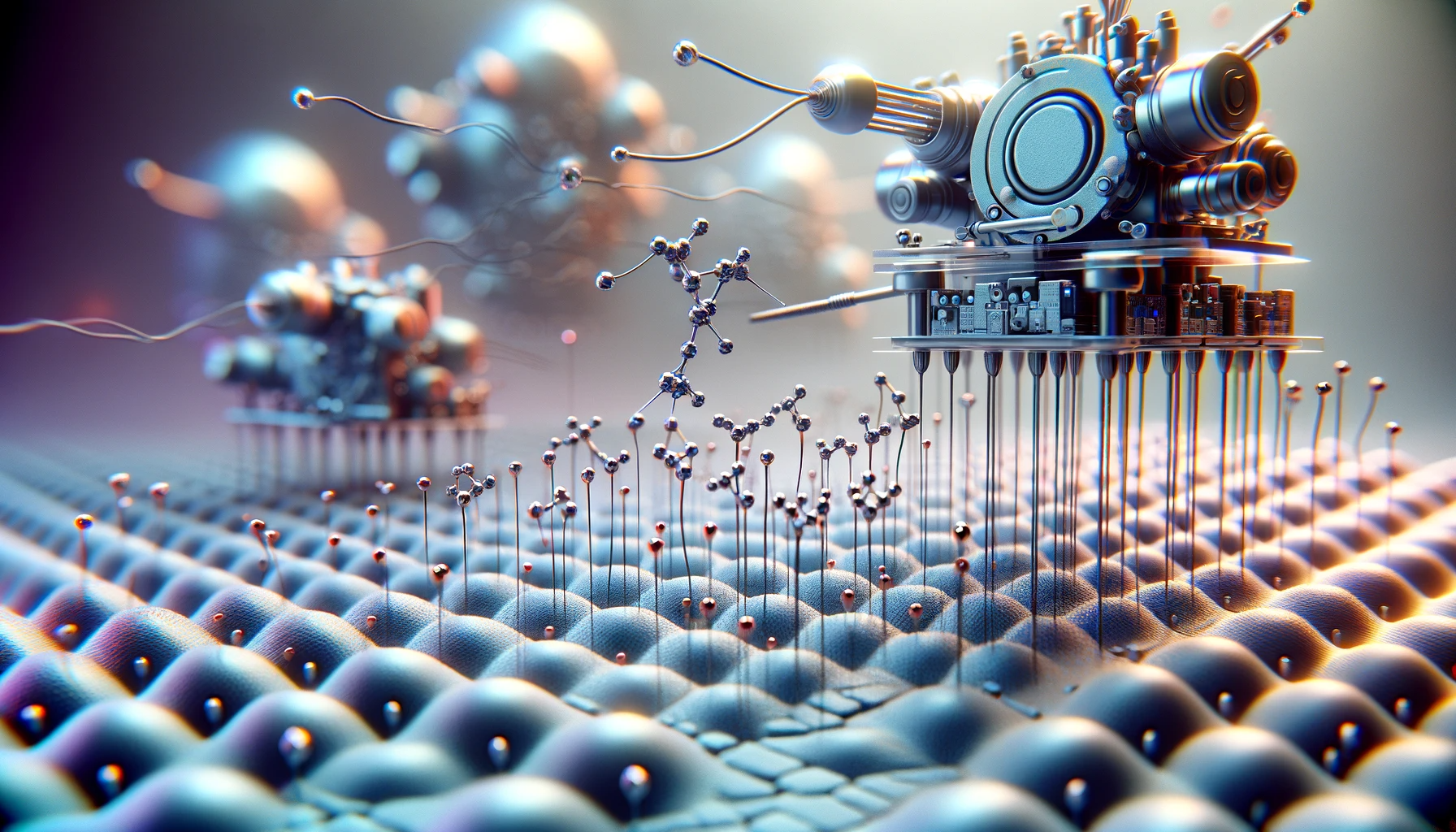In a paper published in Nature Communications, researchers introduced a game-changing solution to nanorobotic motion limitations on solid surfaces. They devised micronewton-thrust nanomotors using a photothermal-shock technique, allowing precise control on dry surfaces—these nanomotors, with exceptional thrust-to-weight ratios up to 107, enabled interaction with micro/nano-objects. Leveraging machine vision and deep learning, they created autonomous nanorobots capable of complex motions and functions. This innovation tackled nanotribology challenges and expanded nanorobotic capabilities from fluids to dry surfaces.
 Study: Autonomous Nanorobots Achieve Powerful Thrust on Dry Surfaces Using Photothermal Shock. Image credit: Generated using DALL.E.3
Study: Autonomous Nanorobots Achieve Powerful Thrust on Dry Surfaces Using Photothermal Shock. Image credit: Generated using DALL.E.3
Background
Robots, with their abilities to sense, think, and act, offer substantial convenience to humanity, while nanorobots signify a promising frontier in technological advancement. The crux for nanorobots lies in powerful nanomotors to maneuver, manipulate objects, and navigate surfaces at the nanoscale. However, at this minute level, interactions between objects are governed mainly by forces like van der Waals interactions, leading to formidable friction that traditional nanomotors struggle to overcome, particularly on dry surfaces.
Methods Employed for Nanorobot Development
This method employed various approaches and techniques to fabricate and operate the nanorobots. Firstly, the materials used, such as single-crystal aurum (Au), palladium (Pd) nanomaterials, zinc oxide (ZnO) micropillars, and cadmium selenide (CdSe) nanowires, were synthesized using specific methods tailored for each material's production. Researchers assembled these materials into the Heterogeneous Optical-thermal Unconventional robot (HOUbot) structure.
The novel photothermal-shock tweezers setup, distinct from traditional optical tweezers, employed a nanosecond fiber laser that could switch between wavelengths to excite samples through a microscope objective. This platform enabled precise manipulation and control of micro/nano-objects on substrates, bypassing the need for highly focused beams or high numerical aperture (high-NA) objectives.
For autonomous control of nanorobots, a combination of laser-based motion control and image recognition through a camera was employed. It allowed for the development of nanorobots capable of cleaning nanodroplets autonomously by following pre-programmed paths and detecting target areas.
In situ sensing was achieved by using a CdSe nanowire on the HOUbot, stimulated by a nanosecond laser, to monitor changes in local humidity through lasing signals collected by a spectrometer. This process facilitated real-time humidity sensing at the nanoscale. Additionally, surface characterization involved:
- Measuring the surface roughness of substrates.
- Determining friction coefficients.
- Analyzing forces required to move nanowires.
Theoretical analyses encompassed equations derived from understanding the dynamics of photothermal shock, heat conduction, and the van der Waals forces influencing interactions between particles and substrates.
Simulation methodologies, including the finite-difference time-domain (FDTD) and finite element method (FEM), were employed to model phenomena such as thermal coupling, transient thermoelastic dynamics, and adhesion forces between nanowires and substrates. Specific parameter values supported the setup of simulations aiming to mimic real-world conditions.
Exploring Nanomaterial Motion Mechanisms
Metallic nanomaterials were laid out on silica substrates to investigate motion mechanisms in various contact scenarios. The examination began with a study of a simple point-contact setting that involved a tilted gold nanowire on a silica base. When subjected to a 532-nm-wavelength laser, this nanowire exhibited a distinctive behavior, swiftly departing the center of the light spot and engaging in quasi-circular motion upon equilibrium. Intriguingly, this motion did not conform to established theories but appeared driven by thermal shock induced by the laser pulses.
The nanowire's response to thermal shock unveiled a surprising interplay of forces. The laser pulse generated intense thermal expansion, causing the nanowire to move in a specific direction due to inertia, akin to a thermal inertia motor. A thermal gradient force acted as a steering mechanism, ensuring the nanowire's motion aligned with the light intensity gradient, enabling stable circular movement.
Investigating line-contact conditions, where nanowires lay flat on a substrate, revealed distinct behavior—advancing towards the hotter end without being driven by thermal inertia. Instead, these nanowires moved due to forces generated by the thermal gradient. Adjusting laser power and spot size altered the nanowires' behavior, enabling lateral motion and controlled bending.
These principles actively harnessed motion for practical applications beyond mere understanding. By leveraging this photothermal shock, researchers developed intelligent nanorobots capable of intricate tasks. These nanomotors showcased substantial output force, surpassing conventional machines in thrust-to-weight ratio. Further applications included Precise assembly operations and autonomous cleaning nanorobots employing machine vision—the creation of sophisticated nanorobots mimicking the motions of more giant creatures. These nanorobots, assembled with diverse components, exhibited agility in performing delicate tasks and sensing environmental changes.
Overall, this groundbreaking technique demonstrated its adaptability by manipulating various nanomaterials. It underscores its potential in diverse applications, from precise manipulation to intelligent robotics, without any observable wear or performance decline over extensive operation cycles.
Conclusion
To sum up, the research explored the nuanced behavior of metallic nanomaterials under controlled conditions, unveiling their unexpected motion responses. These findings shed light on fundamental motion mechanisms and led to the development of intelligent nanorobots capable of intricate tasks and adaptable to sensing environmental changes. These nanorobots leveraged photothermal shock principles and showcased a remarkable range of functionalities, promising diverse applications in the microscopic world.